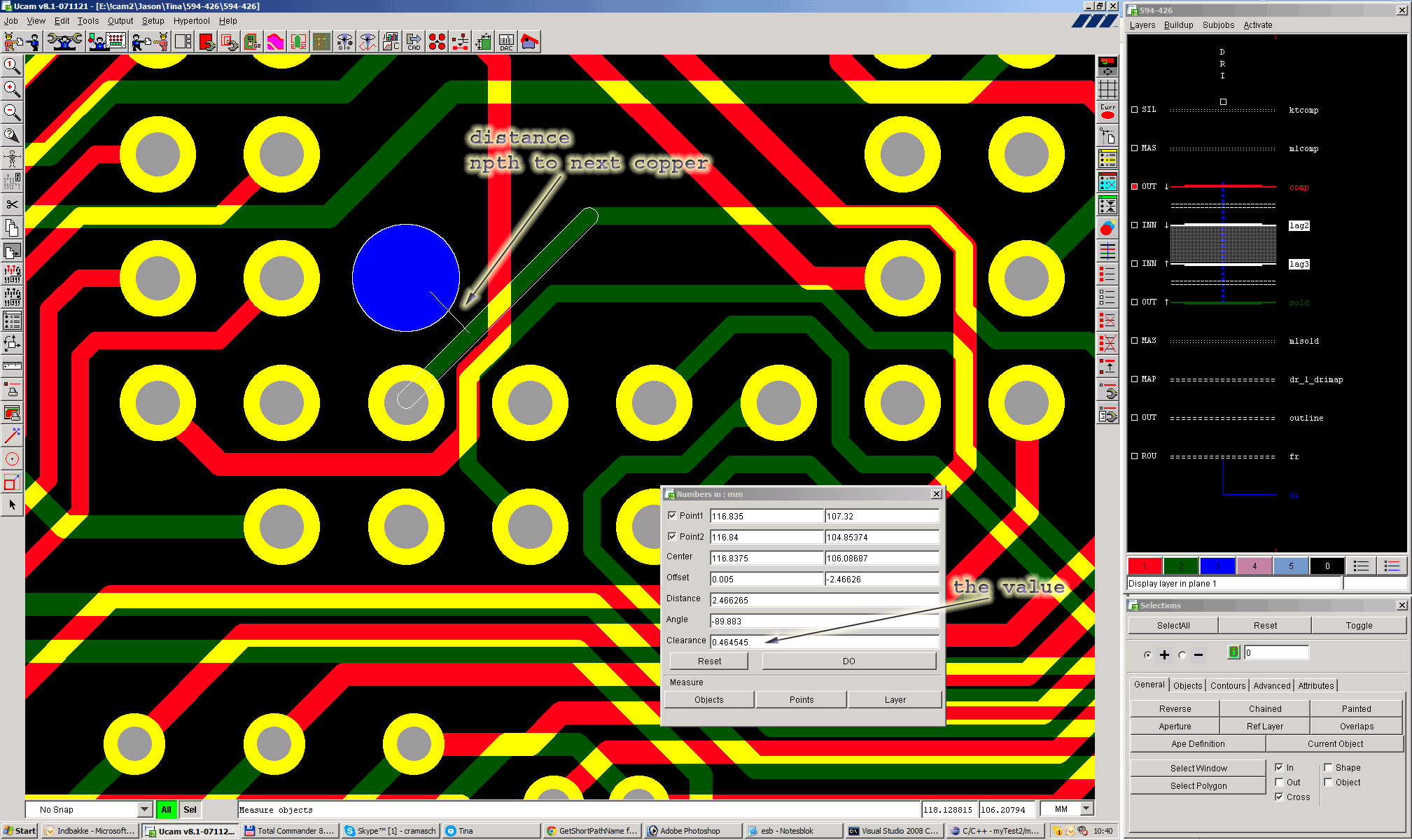UCAM - what is it? And why I did learn it?
UCAM is a tools used on preparation for production of Printed Circuit Boards (PCB).
It is a complex program to manipulate drawings in Gerber format, to step them up on a customer panel,
and to panelize onto production panel. Finally UCAM is used to output data in many different formats
for production.
The reason to learn the process and UCAM was a main part of my job.
Further having knowledge about the PCB production process and the UCAM work,
I could expand UCAM functionality with pure JAVA.
It was not that easy to learn some/many of the included APIs for UCAM,
but the results were more then sufficient!

Why to step the drawings onto customer panels?
One could think, that a PCB as a single board will be used in a device. This is right, but the machines used in the production process
would have difficulties when producing one PCB. A small PCB we have to increase in size. So the customer panel will be created.
To ensure the assembly flow the customer panel will get a frame with holes and fiducials in the corners.
Finally the customer panel is stepped again to reach the size of a production panel. Again we add holes and marks, some testing coupons,
or even manipulate the copper area on the production panel - all together to get a high-quality product.
What about the production process of the panels?
The panels depending on their build-up are exposed, pressed and drilled, etched and applied with solder mask. In between these steps
they are AOI tested on the optical machine. Finally electrical tested, routed out or/and scored, washed and ready to send to the customer.
All these work must be done in the CAM department using some CAM-tools. The CAM has to know the whole production process beginning from the material
properties to the electrical test, where the PCB is going to be short/open testet on the machine.
What else do I have to learn for the PCB factory?
To be a good CAM worker it is necessary to learn how the data we prepare in the CAM is handled on the machine, in other words one have to learn to be a machine
operator. Very often I helped in the production by plotting films, handling panels on the AOI, electrical test, Silk-screen or even more.